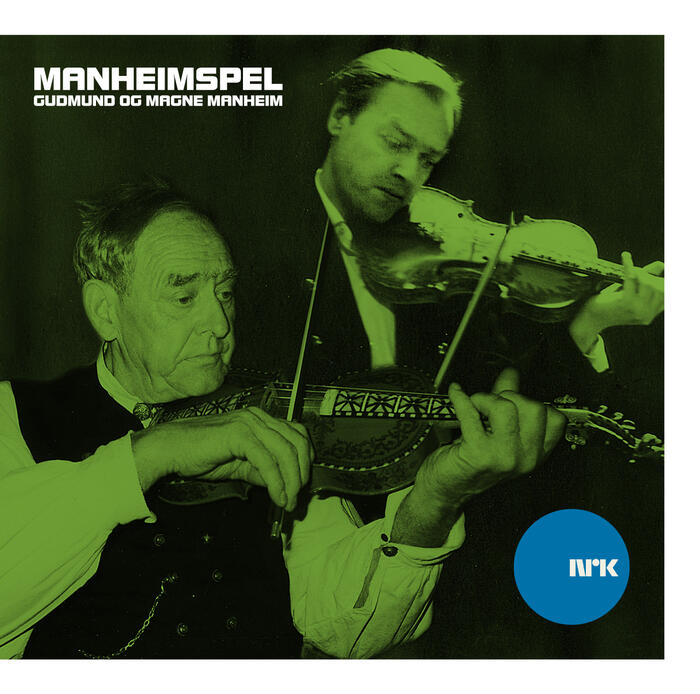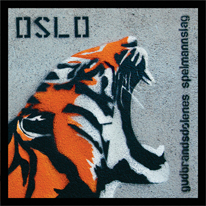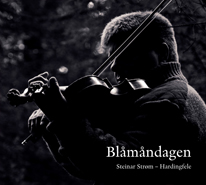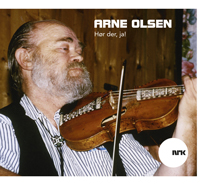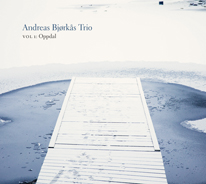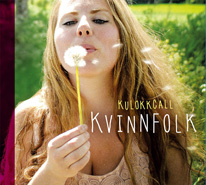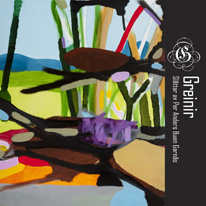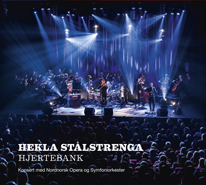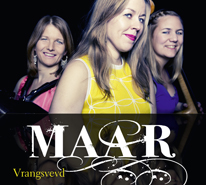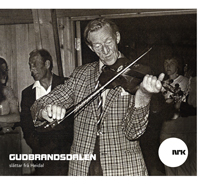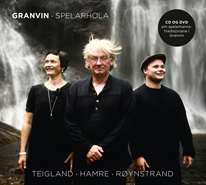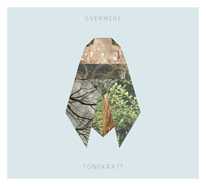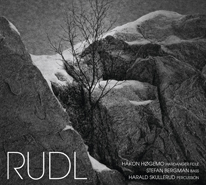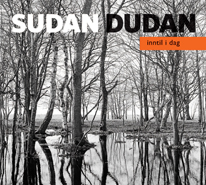Magne Manheim byrja tidleg å studere fiolinspel, noko som mellom anna førde han til København, før han flutte til Oslo under krigen og der vart del av eit rikt musikarmiljø rundt m.a. Eivind Groven, Kjetil Løndal, Sigbjørn Bernhoft Osa m.fl, og fekk slik mange sceniske utfordringar som ein spelemann ofte elles ikkje fekk på den tida.
Han var med Eivind Groven og urframførde komposisjonen hans «Regnbogen» for to hardingfeler, og han var med på, og laga, eit utal folkemusikktimar i NRK. Vidare vart det skulekonsertar og riksteater-framsyningar, samt at han var med på «Verdensungdomsstemne» i Praha i 1947 og til Sovjet i 1953. Han spelte fele på teater, slik som urframføringa av «Tjugendagen» av Aslaug Vaa på den Nationale Scene, var Myllarguten på Bergenshus under Festspillene, var med i balletten «Haugtussa» og framsyninga «Dans ropte fela», og «Det stig av hav» på Det norske teatret rundt 1980 m.v. Eit høgdepunkt var 1956 då han fekk gjera urframføringa av Geirr Tveits fyrste konsert for hardingfele og orkester «Concerto for Hardingfele og Orkester, verk 163» Frå 1956 var han fast tilsett i kringkastingsorkesteret.
På denne plata blir det hovudvekt på det tradisjonelle hardingfelespelet til Magne, men også med døme på spelet til Gudmund Manheim. Plata skal sleppast ved ei felles markering til minne om Gudmund og Magne i Seljord i august, då dei ville ha blitt henholdsvis 90 og 80 år i år. Opptaka er hovudsakleg NRK-opptak, men også nokre privatopptak gjort av Hallvard T. Bjørgum.
The Manheim Style
The art of the great fiddlers is founded on nature, culture and the numerous sounds and timbres of their environments. Manheim is located on the sunny side of the Seljord valley, against the backdrop of staunch Lifjell.
The farm’s high position provides a magnificent view of Skorve with the Kivle valley, Seljordshei, Gagnås and Brokefjell, a reminder of a cultural and musical heritage that includes the legends of the Kivle Maidens and Guro Heddeli. The front door at Manheim opens onto motives from paintings, poems, narratives, songs and Hardanger fiddle tunes. The hills are steep around Manheim, giving the impression that the meadows have sat up to listen to the music and watch the dancing as local settlers such as Rugg Rugtveit, Stabbe Strond and Grimar To gather in Sjeng Manheim’s yard. The interest in music and dance runs through the Manheim family. Their grandfather Egil and father Harald were both renowned fiddlers, so Gudmund and Magne are bearers of a proud tradition. Throughout the 18th and 19th centuries, the road went straight through Manheim’s meadows, and thus many travelling craftsmen, folklore collectors and fiddlers have visited the farm over the years. Visiting fiddlers have included Myllarguten, Håvard Gibøen, Øystein Langedrag, Leiv Sandsdalen and numerous fiddlers from Bø and Sauherad. Gudmund and Magne grew up with this rich heritage, and have continued to develop it in the company of other fiddlers. The Manheim tradition of music and dance lives on to this day. /Sigurd Telnes, local historian
THE MANHEIM STYLE
Gudmund (1918–1991) and Magne Manheim (1928–1997) were born into a family of 12 children on the farm Manheim in Seljord, an environment steeped in traditional music. Their grandfather Egil Eivindson Manheim and father Harald Egilson Manheim (1879–1936) were famous fiddlers, as was their older brother Egil (1904–1941). Several of their siblings took up playing or dancing. Their neighbour, singer Høye Strond, relates how Harald would sit on the mountain peak between Manheim and Strond to play his “incredibly beautiful tunes”, and how Torkjell Haugerud, living on the other side of the Seljord lake, would sit listening to Harald’s music whenever the wind carried it his way. “A wonderful experience”, said Haugerud. Many fiddlers would visit Manheim as Gudmund and Magne grew up, Torkjell Haugerud and Gunnulf Borgen among them. The following account draws upon two newspaper stories: Harald Manheim by Einar Tufte (Morgenposten, date unknown) and Manheim-spelemennene by Ånund Gøytil (Varden, June 15, 1935). “Leiv Sandsdalen was an excellent carpenter. While working at Manheim, he played for Egil [Eivindson] and taught him several tunes. Egil, in turn, passed them on to his sons.” [Harald:] “My father’s fiddle, which was also used by my brothers, was a valuable Helland fiddle from 1860, a sister instrument to Leiv Sandsdalen’s legendary fiddle ‘Kjempa’.” – “The very instrument that he climbed through the storehouse window to get hold of when he was ten years old, is the one he plays to this day.” “Harald has played with many a local fiddler. Eirik Øverland, now about 80 years old, was an excellent player. Ketil Håvardson Gibøen was greatly renowned, but Harald was less than impressed when he went to hear him play at Årfloti, a smallholding belonging to the farm Garvik. When Lars Fykerud returned from America, Harald went to the hotel in Seljord and took him home. Fykerud spent eight days at Manheim during the harvest, playing with Harald and [his brother] Olav during the noonday breaks and in the evenings till past midnight.” “[Harald] Manheim’s teacher was none other than Lars Fykerud, and his playing remains true to the Fykerud tradition, although the influence of Leiv Sandsdalen’s vigorous and distinctive playing is evident.” “Egil [Haraldson] picked up his fiddle, ‘Hugaros’, to play a cheerful springar, and after that the tunes just kept coming. With ‘Hugaros’ gradually warming to the touch of her master, she willingly gave voice to his temperament. Egil is a staunch fellow, and vigour is the foremost hallmark of his playing. Like his father, Egil is a wild, bold, youthful player, but capable of great subtlety and gentleness when called for.” “Much the same can be said of his [Harald’s] playing as of Egil’s. Harald, too, is a strong player with great spirit and assured bowing. There is definitely a Manheim style, but they both have a personal touch.” Both their father Harald and big brother Egil were frequent championship contestants, winning several first prizes in the national championships: Harald in 1919 and 1921, and the both of them in 1931. They both participated in the first traditional music broadcasts in the early 1930s, supervised by Eivind Groven. There can be no doubt that Gudmund and Magne Manheim are part of a rich musical tradition. It was said of Harald that “one would be hard put to find a more easy-going and entertaining fellow. It seems he never runs out of jokes, stories and impersonations. He can tell stories for hours on end. Talkative and funny, he makes people laugh and laughs heartily himself.” The description will probably sound familiar to anyone who knew Gudmund and Magne as well. Gudmund showed great promise as a fiddler from an early age. The newspaper story from 1935 says of Gudmund, then 17 years old: “His playing is altogether different from his brother and father, quiet and calm. He uses a large bow, but that’s a good way to start. He knows the tunes, learns quickly and has a tremendous enthusiasm. It is essential that he receive unbiased and constructive criticism at the championships, and that he spend his time well honing his craft during these years when he is at his most impressionable. If he does, I believe he could well become the best of the Manheims.” Following his brother Egil’s death in 1941, Gudmund took over the farm at Manheim and became occupied with farming and forest work, and with his family. In the early 1960s, when maintaining a mountain farm like Manheim became difficult, he moved with his family to Sanden by the Seljord lake, where he ran a camping site in the summer while managing the Manheim forest in winter. But he remained a crucial part of the traditional music scene in Telemark, and was probably the strongest exponent of the staunch playing style the Manheims were known for. He was an active participant in fiddlers’ societies at both Seljord and Bø. Quite a few fiddlers came by to play with him and learn from him, among them Jens Amundsen, Bjarne Herrefoss, Alf Tveit and Hallvard Bjørgum. In addition, he frequently played at dances. In his later years, he made a comeback on the championship circuit, winning the D class at the National championships at Førde in 1979, the Porsgrunn championships the same year, and the National championships at Otta in 1985. Of his appearance at Førde, Alf Tveit said: “He entered like a king, and he played like a god.” In his 1935 article, Ånund Gøytil observes of Gudmund’s talent: “While listening to his playing, I started thinking that there should be some form of support for young, talented fiddlers like Gudmund, to enable them to spend more time on their music. What if we had a national grant for the likes of him, or a proper academy of traditional music? Couldn’t the Norwegian Broadcasting Corporation provide a yearly sum? To keep the Hardanger fiddle tradition from extinction, something must be done to make it profitable for the performers.” Gudmund never received such a grant, but his youngest brother Magne was “discovered” by composer and conductor Olav Kielland, then living at Bø. Convinced that Magne was a major talent, he raised funds for a grant that enabled the then 16-yearold Magne to travel to Oslo, and later to Copenhagen, to study music and actually make a living from his playing. He eventually became famous throughout the country for his broadcasts, concerts and theatre appearances. It is unlikely that he learned much from his father, who died when Magne was just eight years old. But he was taught by Egil, and especially by Gudmund, whom he never failed to visit when at home in Seljord. An interview by Tore Skaug (TA, 1994) states that following his father’s death “the great fiddler Gunnulf Borgja from Bø was the first to take the talented Seljord boy under his wing. Magne states that he would travel by bus to Bø to stay with Gunnulf Borgja for eight days at a time. Later on, he went to the other side of the Seljord lake to study with Torkjell Haugerud.” He also studied with Høye Kvåle, and was quickly recognized as a major talent.
Coming to Oslo during W.W.II, he studied with violinist Øivin Fjellstad (among others) and finished high school. He played an active part in Oslo’s traditional music circuit, becoming chairman of the Traditional Music Society in 1947. This brought him into contact with a large number of fiddlers, among them Henrik Gjellesvik, later to become his father-in-law. In the autumn of 1948, at age 20, he was made chairman of the National Fiddlers’ Society, probably its youngest chairman ever.
Magne quickly became involved in governmentfunded tours of concerts in schools, and with Riksteatret, the national touring theatre company. He attended the World Youth Festival in Prague in 1947 as part of the Norwegian artists’ delegation, visited the Soviet Union in 1953, and toured extensively throughout Europe. He began a collaboration with Eivind Groven on Norwegian broadcasting, which led to Groven including him in the Hardanger Fiddle Trio. He also collaborated with the NRK’s Rolf Myklebust, travelling, recording and presenting programs of traditional music. He recorded a large number of tunes for the NRK in the 1950s and 60s, when he was arguably at the height of his career. They include traditional Telemark tunes, West Norwegian tunes after Gjellesvik, concert pieces and compositions by Torkjell Haugerud, Schart’s transcriptions of Myllarguten, Eivind Groven’s pieces for two Hardanger fiddles, and more.
Myklebust writes: “Magne Manheim’s fingering and bowing technique is without blemish, his musicality is subtle and his sense of form acute, lending an elevated quality to his playing. Manheim’s interpretations turn the tunes into pure music, released from time and place, their functional character notwithstanding. His renderings of Torkjell Haugerud’s compositions are exemplary. At any time, I can call up the memory of the concert piece ‘Huldrejenta’ as played by Magne with lyrical imagination and exceptionally precise quavers.” (Rolf Myklebust: Femti år med folkemusikk, 1982)
He contributed Hardanger fiddle performances to several theatre productions, among them Tjugendagen by Aslaug Vaa at Den Nationale Scene and Det Norske Teatret, Myllarguten på Bergenshus at the Bergen International Festival, the ballet Haugtussa at the National Opera, and the show Dans ropte fela featuring Kjetil Løndal and Sigbjørn Bernhoft Osa, which toured extensively in Norway, Europe and the United States during the 1950s and 60s. A climactic achievement was his premiere performance of Geirr Tveitt’s Concerto for Hardingfele og Orkester, op. 163 at the Bergen International Festival.
From 1956 onwards he was also a violinist and full member of the Norwegian Broadcasting Corporation’s orchestra, but he was still best known as a Hardanger fiddle performer. He took part in grammophone recordings, and his version of “Haslebuskane” with Talleiv Røysland wass a substantial hit.
When he retired, he moved back to Seljord with his wife, resurrected the Seljord Fiddlers’ Society with the help of his nephew Harald Manheim in 1991 and remained its artistic director until his premature death in 1997. His last public performance was in Seljord of Sigurd Nes’ poetic cycle Draum, containing three of Torkjell Haugerud’s tunes, alongside actors Nils Sletta, Astri Folstad, Hæge Manheim and Kristin Skogheim in 1994.
“It’s been a long time since we last heard Magne Manheim play the Hardanger fiddle. Though he is now a regular member of the NRK orchestra, I really wish we could hear him play a Hardanger fiddle solo again.” (Rolf Myklebust: Femti år med folkemusikk, 1982)
It seems to me that it’s about time Myklebust had his wish, and I’m only too happy to be able to include recordings by my uncle Gudmund as well.
/Hæge Manheim daughter of Magne Manheim
ABOUT THE RECORDINGS
For this CD, we have focused on the Manheim and Seljord tradition. As championship recordings of Gudmund are scarce in the NRK archives, we have included a number of recordings made by Hallvard Bjørgum at Sanden in 1985. Most likely, the tunes are versions fashioned by his father and brother. We are indebted to Alf Tveit for the notes on Gudmund’s tunes. All the recordings of Magne were made by the NRK. He would often present the recordings himself, some of these comments are quoted in the notes, and a couple have been included on the CD. /Hæge Manheim
ABOUT THE INSTRUMENTS
Gudmund plays a Stjeintjønndal fiddle from 1958. Magne plays a Helland fiddle from 1925 and a Gunnar M.A. Røstad fiddle from 1919 called “Brita”, inherited from his father-in-law Henrik Gjellesvik.


